The History Of Rolls-Royce Production Between 1904 – 2004

Taking a Look at 100 Years of Excellence (1904-2004)
In Great Britain, back a long time before Elizabeth II ruled, there was just a single word for extravagance — indeed, really two words — Rolls and Royce — made by the blend of C.S. Rolls and Co., and Royce and Co. Ltd. The principal vehicles to bear both their names had placed wheels to street in 1904, when Henry Royce constructed the vehicles and Charles Rolls took care of their deals and conveyance. In 1904, the popular radiator shape was concocted and presently a short time later, the token of laced first letters from every one of the accomplice's last names turned into the image of Great Britain's most unbelievable motorcar. Messrs. Rolls and Royce were, be that as it may, not the only one to make this ordering picture. Additionally engaged with the establishing of the organization was Claude Johnson, a partner of Rolls, who in a real sense turned into the "dash" in Rolls-Royce, and the company's recognized overseeing chief.
A year after the development of Rolls-Royce Ltd. in 1906, the organization presented the Silver Ghost, a gigantic passenger vehicle named by Johnson for the thirteenth model created, which highlighted a particular dim variety plan and silver-plated fitments. Each of the 40/50-strength six-chamber Rolls-Royce models from there on came to be known as Silver Ghosts. Composed Johnson of the vehicle's absurd pseudonym, "Silver, as being unadulterated and hallmarked, and Ghost, as being emblematic of its smooth, quiet, easy development." Johnson additionally took it upon himself in 1907 to turn into the organization's limited time chief and test pilot, sorting out for public shows of the vehicle's exhibition and solidness. In publicizing, Johnson announced, "the six chamber Rolls-Royce, not truly outstanding, yet the best vehicle in the World." Those prophetic words, "The Best Car in the World," stay connected to Rolls-Royce right up to the present day.
 |
The primary Silver Ghost, so named by Claude Johnson in 1907. Presently 97 years of age, and with in excess of 700,000 miles having passed underneath its wheels, the Silver Ghost stays the substance of Sir Henry Royce's ideology: Quidus recte factum quamuis humile praeclarum: "At all is appropriately finished, but modest, is honorable." |
After ninety years, this creator and Richard Charlesworth, then, at that point, top of the Rolls-Royce Public Affairs Department, drove exactly the same Silver Ghost, body AX201, through Scotland and up "Rest-and-be-Thankful" slope with similar outcomes Johnson experienced in 1907. Alongside us were 50 other Silver Ghosts from around the world, making the journey from Glasgow, along the west bank of Loch Lomond to Tarbeth in the Scottish open country, where little has changed since the Scottish Reliability Trials previously occurred, or so far as that is concerned, since the hour of William Wallace.
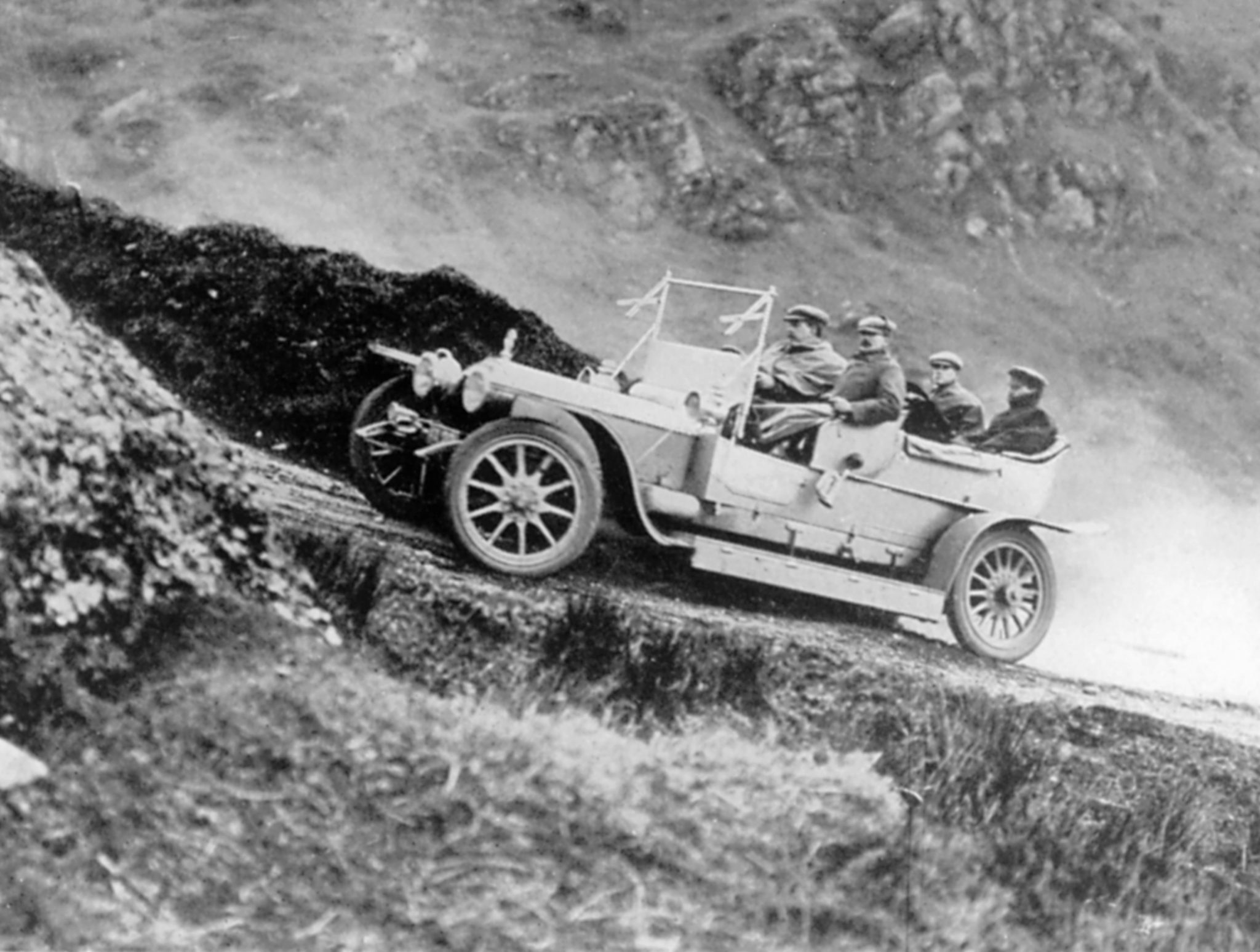 |
The unbelievable Silver Ghost in 1907 as it energized "Rest and be Thankful" slope in Scotland. |
The Phantom I showed up in 1925 however the main huge change from the Ghost was the presentation of another 7.4-liter (453.2 cubic-inch) above valve six-chamber motor. The Phantom I was generally a momentary model, showing coachwork like that of the later Ghosts, a similar skeleton and suspension, and four-wheel brakes, which were presented on the 1924 models. New body plans didn't start to show up until 1928 and 1929, by which time the Phantom I was prevailed by the superior Phantom II.
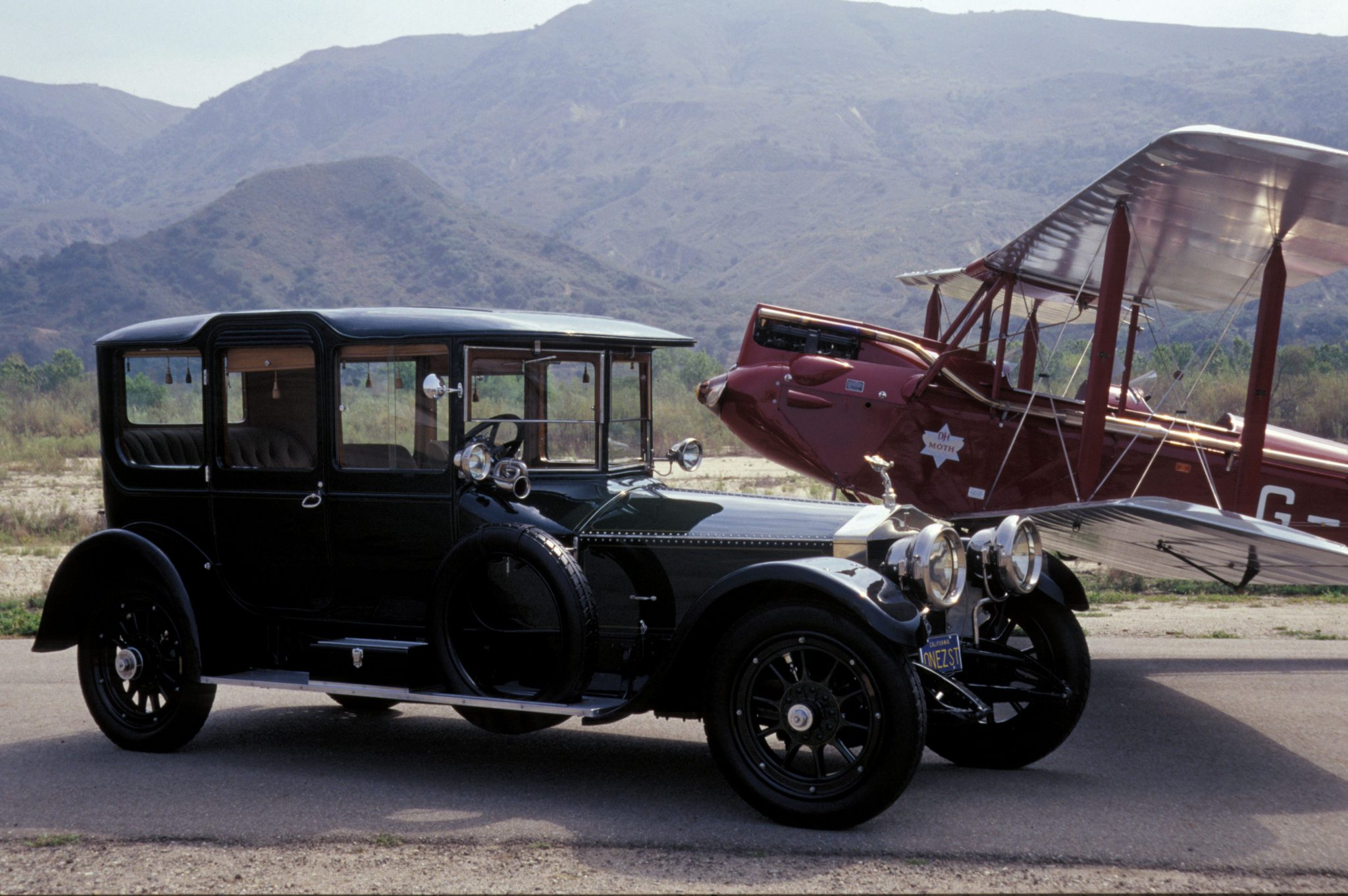 |
A 1913 Silver Ghost Town Carriage bodied by H.J. Mulliner. The expense in 1913 was $6,425. |
The Phantom II was outfitted with a modified six-chamber motor expanding result to around 120 strength at 3000rpm, and later to 158 pull by utilizing a higher 5.25:1 pressure proportion and another carburetor. Delivered through 1935, the body styles presented on the Phantom II were the high-watermark in prewar Rolls-Royce coachwork. In the mid 1930s, nonetheless, a six-chamber motor was not great, not so much as one worked by Rolls-Royce. American automakers were offering eight-, 12-and 16-chamber motors, and the opposition in the U.S. also, Europe was extending notwithstanding the monetary impacts of the Depression. However it appeared to go against rationale, Packard, Cadillac, Lincoln, Auburn, Pierce-Arrow and Franklin all had presented 12-chamber motors. Cadillac and Marmon had even appeared 16-chamber models, the last option flopping in 1933. In Europe, Hispano-Suiza had presented the 12-chamber J12, and Rolls-Royce with its inline six, was basically no match on one or the other landmass. Consequently, in the fall of 1935 the British automaker multiplied its risk with the 12-chamber Phantom III.
 |
The first "energetic" Rolls-Royce was an American plan on a 1921 Silver Ghost skeleton bodied in Springfield. The Runabout plan with a collapsing back sidekick or "trap" seat was so generally welcomed that it apparently turned into the model for the popular Rolls-Royce Picadilly Roadster. This vehicle stayed the property of the first proprietor, Seymour H. Knox, from September 21, 1921, until his passing in 1990! |
Obviously, Ghosts and Phantoms, however the best Rolls-Royce models, weren't the main guides to bear the RR symbol and Spirit of Ecstasy mascot throughout the course of recent years, and only one out of every odd vehicle to convey the Rolls-Royce name was an extravagance vehicle, or vehicle by any stretch of the imagination besides!
At the point when Great Britain did battle in 1914, the Rolls-Royce Company was approached to turn its endeavors to the assembling of air motors. The organization chose to configuration its own scope of motors to be named after flying predators, like Eagle, Falcon and Condor. It was not well before Rolls-Royce air motors partook in similar standing for greatness as their cars.
 |
The exquisite and masterful Phantom I was like the last series of Silver Ghosts, created in the mid 1920s, and used the Silver Ghost's skeleton, suspension and four-wheel brakes, which were presented on the 1924 Ghosts. This Springfield Rolls town vehicle was bodied in New York by Brewster and Co. furthermore, highlights the association's incredible hand-painted wicker canework on more than 66% of the body. |
A report in The Times in 1916, read, "… the reinforced vehicles utilized in Egypt are Rolls-Royce. Not enduring all the unpleasant work they have done there has been no motor breakdown. The vehicles have run north of thousands of miles of harshest desert and the total shortfall of motor difficulty is a victory for British workmanship."
After the conflict in 1919 James Alcock and Arthur Whitten Brown took off from a sloppy runway in Newfoundland. Their airplane was an ex-RAF plane, a Vickers Vimy, controlled by two Rolls-Royce Eagle motors and the first relentless intersection of the Atlantic Ocean via air was made. The accomplishment was generally credited to Rolls-Royce. Alcock said, "All the credit is because of the machine — and especially the motors: that is everything." Winston Churchill said, "I don't have the foggiest idea what we ought to most appreciate — their dauntlessness, assurance, expertise, science, their Vickers Vimy plane, their Rolls-Royce motors — or their favorable luck."
 |
The P II was showered with the most sumptuous coachwork of any Phantom model. Large numbers of the impressive coachbuilt vehicles had a demeanor of ostentatiousness regular of the 1930s, yet few had the strange pizazz of this 1932 Croydon Victoria made by Brewster and Co. in New York. The body style was all the more often seen on models like Packard and Duesenberg. This model was worked for Mrs. Jessie Woolworth Donahue at an expense in 1932 of $18,600. |
In 1929, the Twenty and the Phantom I were both supplanted. Royce's new frame, the Phantom II, was as yet evaluated 40/50 yet was lower and the springing half elliptic all around. The vehicle, despite the fact that to Royce's plan and detail, was essentially crafted by his West Wittering configuration group. Royce was impacted by the lines of the momentum Riley Nine, and how the back travelers' feet were wrapped easily under the front seats up "boxes," empowering "close-coupled" coachwork to be fitted.
 |
One more intriguing minor departure from the Phantom II is this French-bodied Salamanca Town Car by Kellner of Paris. |
The presentation of the Phantom II, just a short time after the Phantom I, was provoked by expanding contest from different producers, especially Buick in the U.S. what's more, Sunbeam in England. Unexpectedly, Edward Strong, the top of GM's Buick division, had purchased a Phantom I and it dazzled everybody at Buick such a lot of that they stripped it and duplicated a lot of what they realized!
Simultaneously the Phantom II was presented, the little 20hp had a motor expansion from 3.1 liters to 3.7 liters. It was presently called the 20/25hp and kept up with Rolls-Royce's standing for the greatest possible level of value, unwavering quality and tastefulness. Nonetheless, there was as yet a hole in the market that Rolls-Royce wished to take advantage of, which was for the more jaunty, wearing vehicle.
 |
Colonel T.E. Lawrence (Lawrence of Arabia) with his Rolls-Royce Silver Ghost delicate in 1916. Rolls-Royce protected vehicles were utilized by Lawrence with extraordinary outcome in the desert crusades. "A Rolls in the desert is above rubies," said Lawrence. |
Until its new obtaining by Volkswagen, Bentley stayed a piece of Rolls-Royce, and without precedent for over 70 years, has turned into a free marque. Rolls-Royce itself is currently claimed by BMW, albeit the vehicles are as yet implicit the Rolls-Royce processing plants in England by a lot of people of similar experts and children of those specialists, who have seen to the development of Rolls-Royce motorcars for quite a long time.
In 1936, the more modest 20/25 developed all the more impressive (and heavier) to turn into the 25/30hp. Further frame upgrades brought about the 1938 Rolls-Royce Wraith, one more lively name. Improvement of these two autonomously sprung vehicles, in any case, was stopped by the beginning of World War II in 1939.
Not very many vehicles were finished in 1940, with creation focused on air motors, and furthermore their variations for use in tanks and to drive vessels, for example, torpedo boats. In a bid to speed up the creation of the Merlin motor, the Air Ministry dispatched various 'shadow' production lines. Despite the fact that Derby stayed the center of creation, another processing plant was worked at Crewe. A sum of 166,000 Merlin motors were delivered. At the point when harmony got back to Britain in 1945, the Derby processing plant went on with airplane motor creation, with planes like Derwent, Avon, Dart, Tyne, Conway and Spey. Motorcar creation, in the mean time, started at the Crewe manufacturing plant, where it stayed until the new Rolls-Royce production line was as of late opened at Goodwood.
After World War II, Rolls-Royce the board understood that the organization would need to forsake the tailor made nature of its items and conform to different makers in the post bellum time. This implied planning a squeezed steel body and assuming a sense of ownership with the production of a total vehicle, instead of just the frame, which up to this time had been fitted with specially crafted coachwork. The Cowley-based Pressed Steel Company was drawn nearer and Rolls-Royce sent off its after war program in the spring of 1946.
One month from now we proceed with the memorable excursion of Rolls-Royce into the post-World War II period and all through the twentieth 100 years.
 |
The most gorgeous body plan accessible for the Phantom V was the James Young Touring Limousine, a mammoth four-entryway with strikingly clearing fenderlines and a fancy turtle-deck trunk top that gave a false representation of the enormous size of the vehicle, just shy of 20 feet long. A sum of 92 were constructed. Sufficiently strong to easily journey the present roadways and adequately rich to equal the most current limousines, this Phantom V is by a wide margin the best vehicle in the Phantom's heredity. |
After World War II
From 1946, Silver Wraith suspension were as yet provided on solicitation to the couple of outstanding coachbuilders, and numerous great styles were fitted, yet the standard steel-bodied vehicles were soon on the scene. The organization was at first wary. It didn't have the foggiest idea what the public response would be to the first non-coachbuilt vehicles, however they were generally welcomed and interest for the Rolls-Royce Silver Dawn, sent off in 1949, was solid, particularly in America, and another market arose at home, as well.
The motor of the post bellum vehicle was a straight six of 4,257cc limit with above delta and side fumes valves, a design took on by Royce in his initial two-chamber vehicle in 1904.
 |
The Phantom VI was as far as it goes for the lavish Rolls-Royce models, finishing 66 years of creation that started with the Phantom I in 1925 and closed with the masterful Phantom VI in 1991. |
The Silver Cloud I was trailed by the Silver Cloud II sent off in 1959. However holding a similar body as the Silver Cloud I, the Cloud II was fueled by a totally new V8 motor of 6,230cc. Combined with programmed transmission as standard, the Silver Cloud II set new guidelines of refinement and execution.
In 1962, a lower hood line and twin headlamps were presented, and the Silver Cloud III was conceived. Motor power was increased by 15% and the maximum velocity to 117mph.
Rolls-Royce's generally huge model since the Silver Ghost, the Silver Shadow, required 11 years to work out as expected in 1965 and had numerous specialized refinements. Under the code name Tibet, the Silver Shadow was the principal Rolls-Royce to utilize monocoque or unitary development.
 |
One of the most appealing of all after war Rolls-Royce models was the Silver Cloud II convertible. The Cloud II was created from 1959 to 1962 and controlled by a totally new V8 motor delivering 185 strength. (Rolls-Royce of America) |
The Silver Shadow was sent off in October 1965, estimated at £6,556. This made it around £900 more costly than the Cloud III, yet in specialized terms the Silver Shadow was infinitely better — effectively the most complicated model at any point presented by Rolls-Royce up to that point.
The Silver Shadow and 1977 Silver Shadow II were bound to turn into the smash hit Rolls-Royce vehicles ever, with 34,611 sold somewhere in the range of 1965 and 1981.
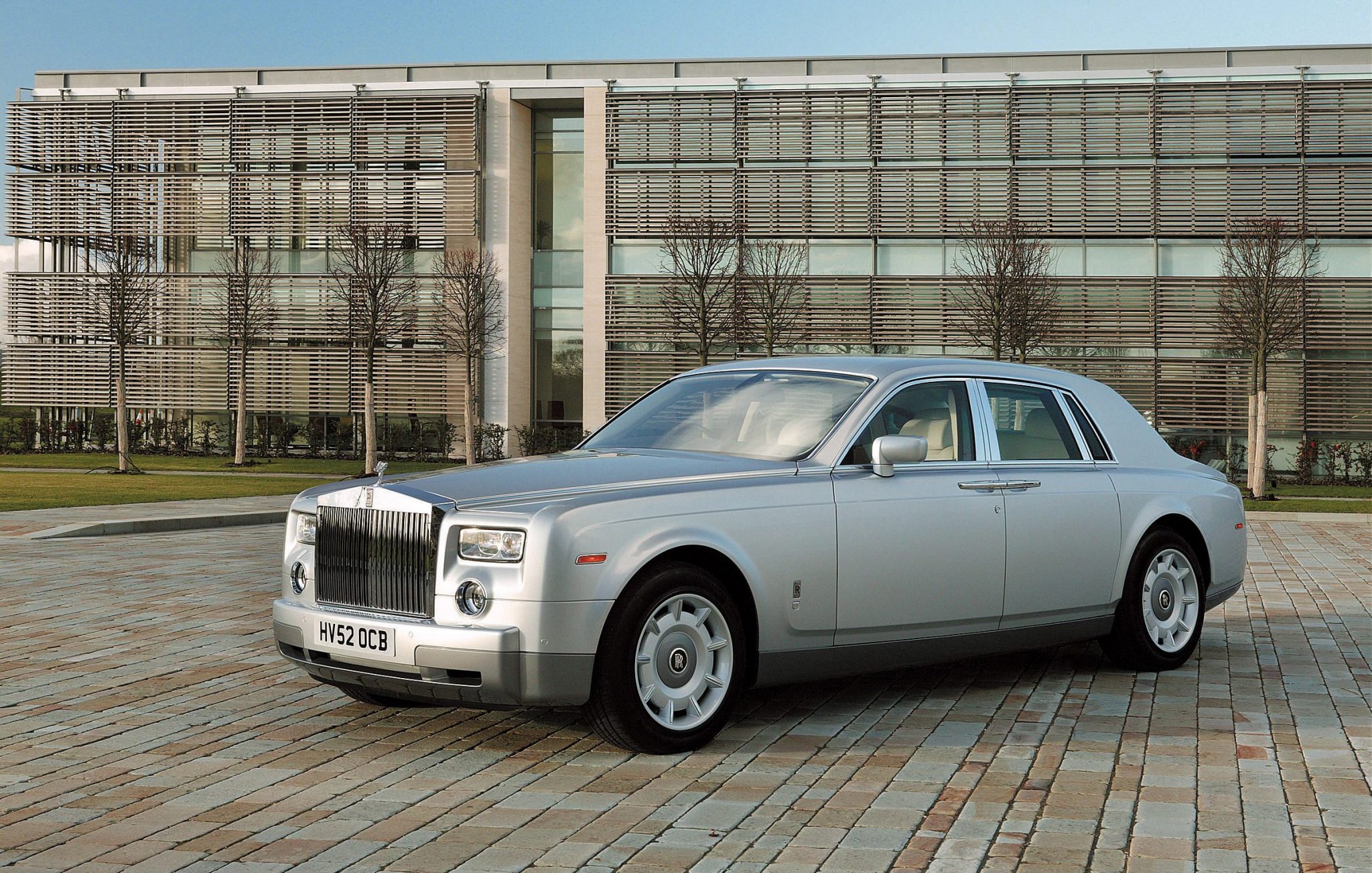 |
For 2004, Royce is offering the main Phantom model starting around 1991, and just the second Rolls-Royce model controlled by a V12 in the greater part 100 years! A vehicle that knocked some people's socks off at Concours d'Elegance shows last year, the 2004 Rolls-Royce Phantom revives the restrictive name keep going utilized on the 1991 Phantom VI. Controlled by another BMW V12, the Phantom conveys 453 drive from a 6,749cc (411.8 cubic inch) 60-degree, V12. (Rolls-Royce of America) |
The Crewe styling division created a delightful, carefully molded two-entryway car subordinate of the Silver Shadow, which was designed and delivered by Mulliner Park Ward. At the point when sent off in March 1966, it was evaluated at £9,849, almost £3,300 more than the standard four-entryway cantina. This was followed, year and a half later, by a convertible variant valued at £11,511. In 1971, these models were upgraded and renamed Corniche.
Pininfarina planned the following two-entryway car, the Rolls-Royce Camargue, sent off in 1975 and the principal current Rolls-Royce with a body planned by another organization. It was evaluated at £29,250, almost twofold that of the Silver Shadow.

In 1971, the Rolls-Royce aerodynamic and auto aggregate had gone into receivership, despite the fact that it kept on exchanging for quite some time until the organization was drifted on the financial exchange. In 1980, Rolls-Royce Motors was converged with Vickers. Another reach known as Project SZ was presented around the same time. These vehicles were the Silver Spirit and Silver Spur.
Remotely these vehicles were altogether new however held a large portion of the body stage from the past model. The significant special case was the backside, which was changed to acknowledge another back suspension. This new framework had been sent off during 1979 on the Corniche and Camargue models.
Advancement went on during the 1980s and 1990s, and incorporated the send off of forms II and III of both the Silver Spirit and Silver Spur. In 1998, the Silver Seraph was sent off with a 5.4-liter V12 BMW motor. This was the main Rolls-Royce model to offer a V12 since the Phantom III in 1939.
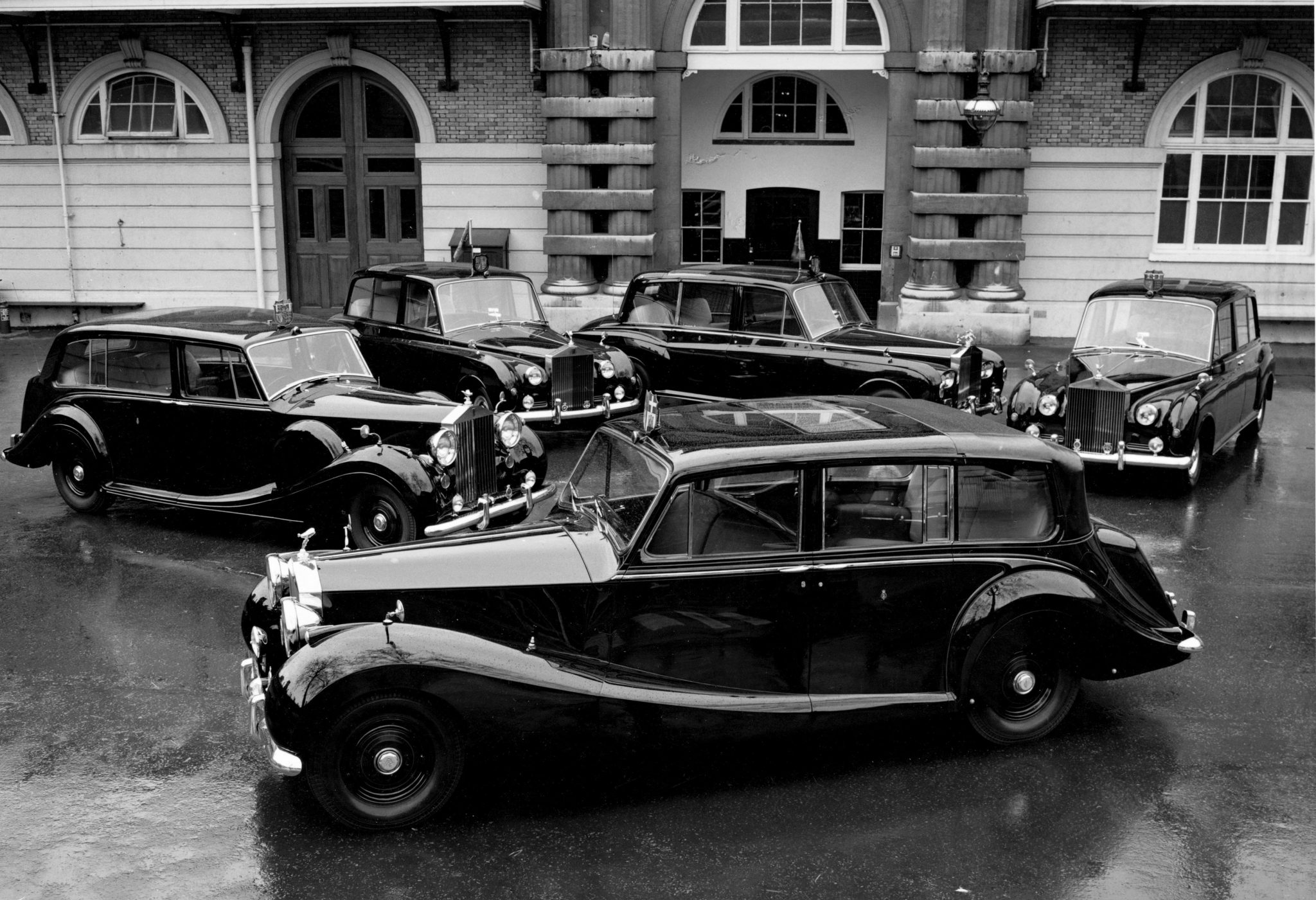 |
Rolls-Royce models in the Royal Family |
The Phantom VI, fueled by a modified 412-cubic-inch, above valve, 220-pull V8, was delivered through 1991. In view of Silver Shadow mechanicals, most highlighted Shadow-motivated coachwork. A simple 374 were created denoting the finish of the twentieth century Phantoms.
To commend the marque's 100th commemoration, another 21st-century Rolls-Royce Phantom has been presented, and like its incredible exemplary time ancestor, a V12 motor powers this Phantom. Consequently, history has rehashed the same thing, and strikingly in this way, as the new Phantom has spot in a heredity of unbelievable vehicles started in 1904.
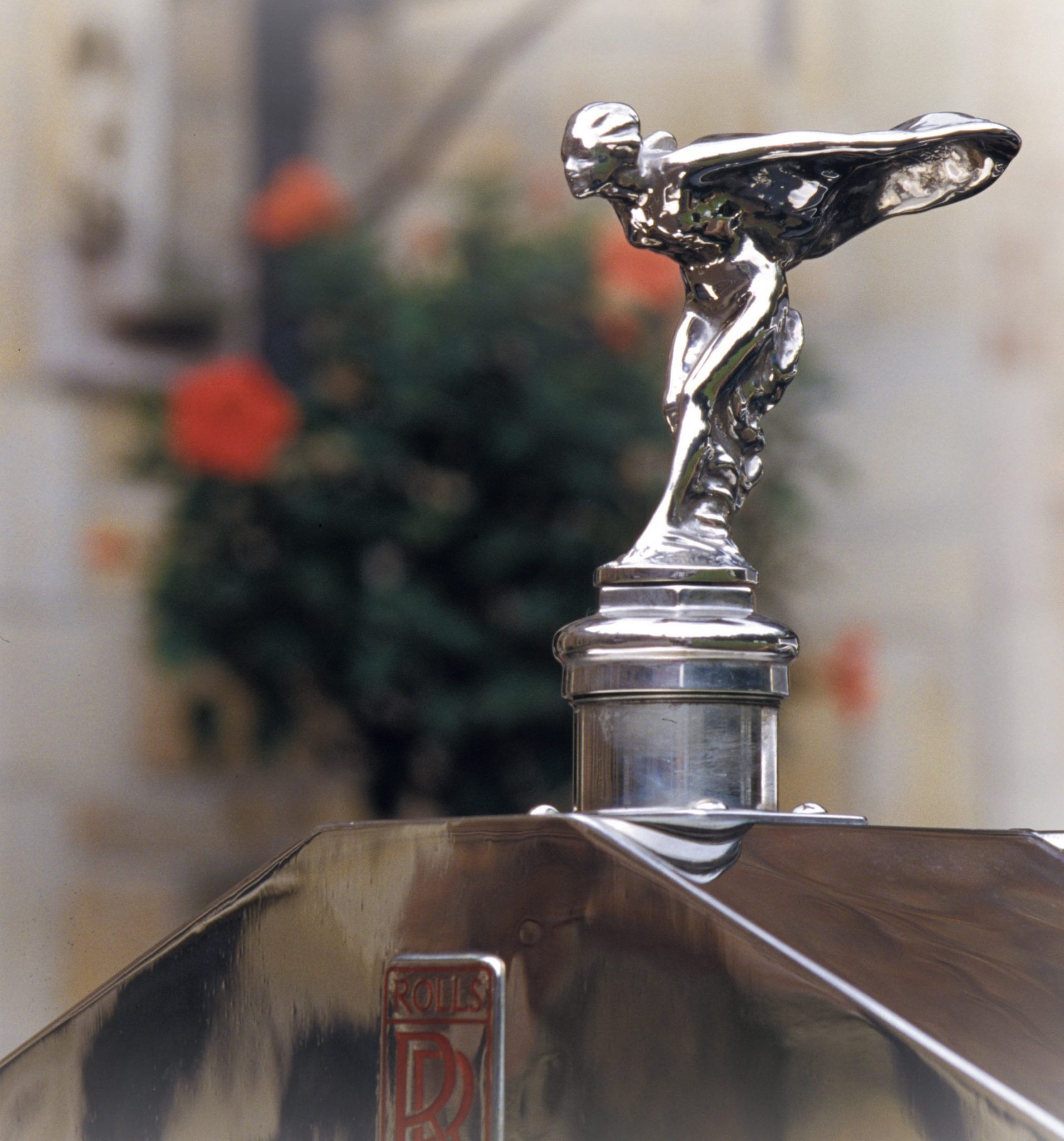 |
Known as The Spirit of Ecstasy, the Rolls-Royce flying woman has turned into the exemplification of the marque, an image perceived the world over beginning around 1911. |
The Spirit of Ecstasy - A World-Famous Mascot Is Created
Henry Royce detested mascots, yet, bowing to request, yielded giving it truly deserved one of his vehicles. The organization charged Sykes to shape a mascot that would exhibit every one of the characteristics that the vehicles embraced and one that would improve the general look of the vehicles. He thought of the doll of a young lady with arms outstretched holding the folds of her outfit blowing in the breeze. Sykes utilized John Montagu's secretary, Eleanor Thornton, as the model for his work and when the plan was settled upon, she became epitomized until the end of time. Initially named as 'The Spirit of Speed' and all the more by and large called 'The Flying Lady' or 'The Silver Lady,' she is accurately known as "The Spirit of Ecstasy."
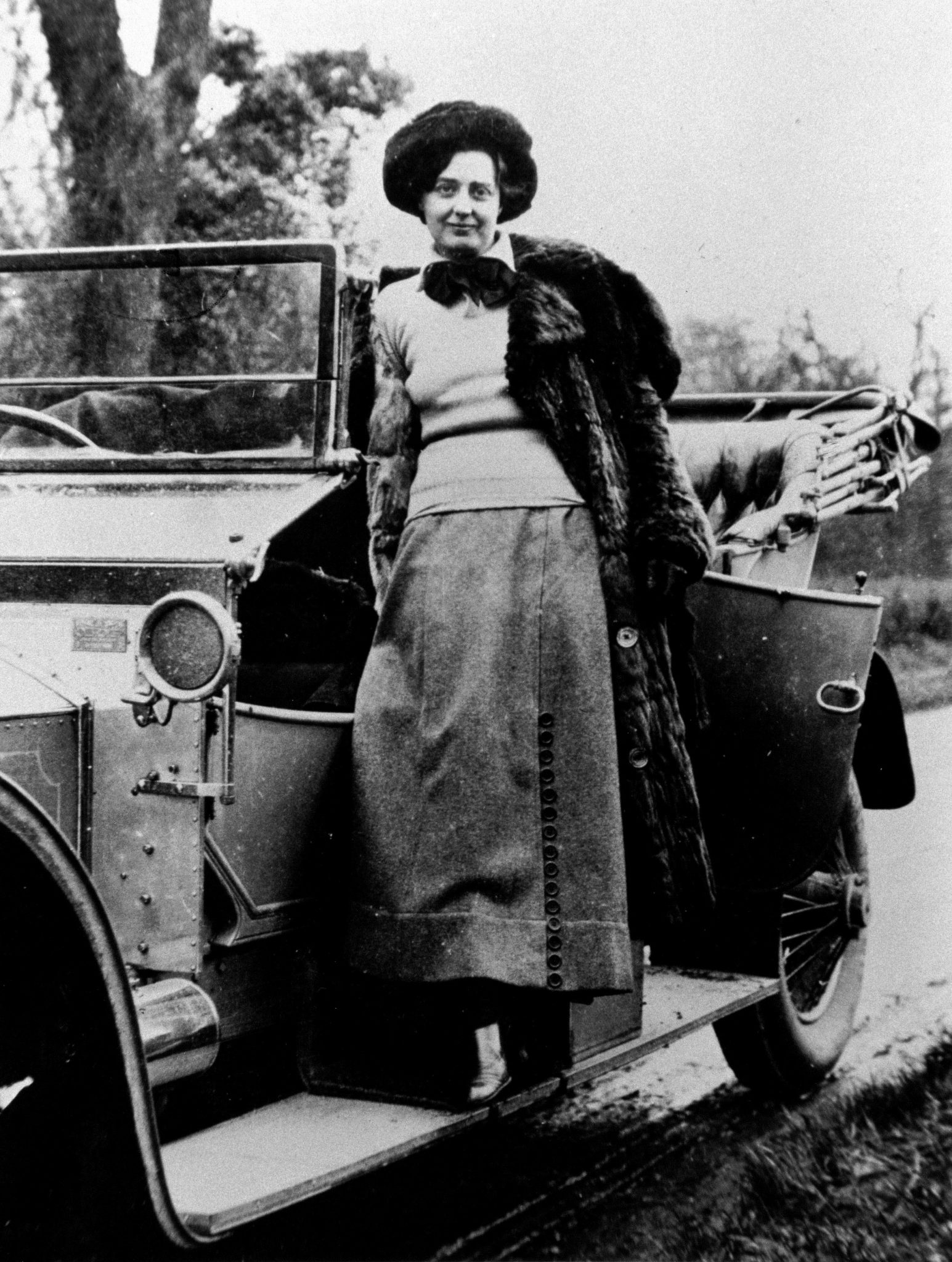 |
Eleanor Thornton was the model for Sykes' Spirit of Ecstasy hood trimming utilized by Rolls-Royce. (Rolls-Royce of America) |



0 Comments